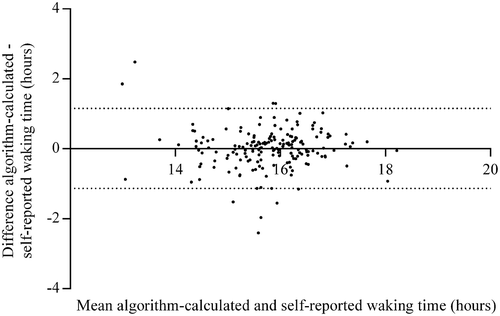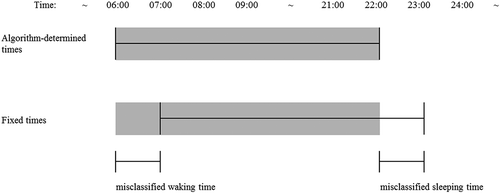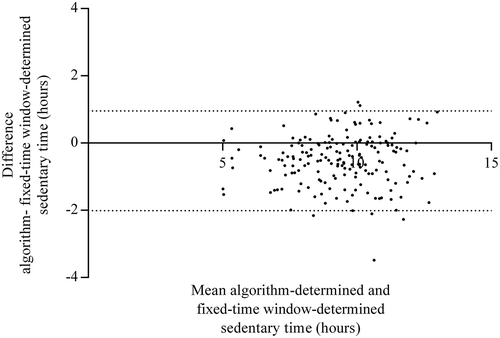Figures & data
Table 1. Cut-off points for determining wake and bed times in the proposed algorithm.
Table 2. Descriptive characteristics of the study sample.
Table 3. Absolute differences in rise and bed times derived from algorithm-determined, self-report and fixed-time window methods.
Table 4. Comparison of waking time, sedentary time and percentage sedentary time determined by algorithm-determined, self-report and fixed-time window methods.
Figure 1. Bland–-Altman plot of the mean of and differences between waking hours based on self-reported and algorithm-calculated waking time. Dotted lines indicate the limits of agreement.



